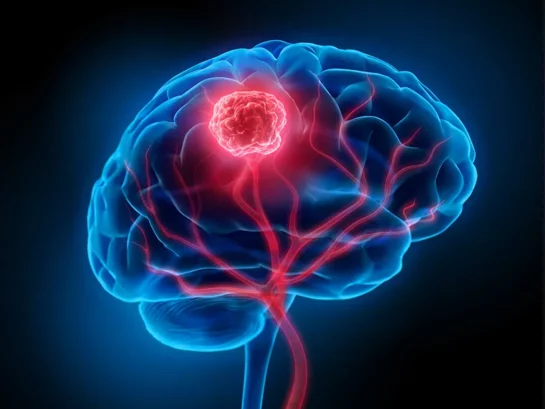What is 5-ALA Fluorescent Dye?
5-ALA Fluorescent Dye, nicknamed the “Pink Drink,” is an optical imaging agent that is administered orally to brain cancer patients prior to surgery. 5-ALA, or 5-Aminolevulinic Acid, consists of fluorescent dye that glows when placed under UV light. Once ingested, only the cancerous cells glow. This allows neurosurgeons to target and remove the cancerous cells and spare the healthy ones, causing less damage to healthy tissue.

Benefits of 5-ALA
5-ALA Fluorescent Dye has been shown to benefit people with high-grade (fast-growing) gliomas, the most common type of brain tumor. The treatment also shows promise for diffuse infiltrating gliomas (DIGs); particularly the most aggressive form, glioblastoma multiforme (GBM). Approved by the U.S. Food and Drug Administration in 2017 and commercially available in 2018, Neurosurgical Associates is one of the few practices in New Jersey to use this groundbreaking method of treatment.
Gliomas
About 33 percent of all brain tumors are gliomas. High-grade gliomas consist of long threadlike tendrils that flow into surrounding areas of the brain. Under normal light, the tumor’s edges are difficult to see due to the glioma’s diffuse nature. Because of this, surgeons find it difficult to remove all of the tumor. If not enough of the tumor is removed, the tumor may recur, and also healthy cells may be damaged. However, using the 5-ALA Fluorescence Dye prior to surgery enables surgeons to see the tumor’s edges under a UV light and allows for a more complete resection.
How 5-ALA Fluorescent Dye is Used
When a patient drinks 5-ALA prior to surgery, the dye accumulates in malignant brain tumors and surrounding cancer cells allowing for fluorescence-guided surgery. Surgeons are able to see if tumors have more than one center or have extended from the original tumor. This greatly increases the chance for near total removal of the tumor, which leads to better overall outcomes.
Success and Recovery
Prior to using 5-ALA Fluorescent Dye, the tumor recurrence rate averaged one to two years because of incomplete identification, and only around 30 percent removal of the cancerous cells. Now, using fluorescent guidance from orally administered 5-ALA, surgeons successfully remove the entire tumor in 70.5 percent of cases.
There is less need for more aggressive treatments, such as chemotherapy or radiotherapy, and therefore less damage to healthy brain tissue. The greater chance of a complete resection combined with fewer aggressive treatments means patients have more days feeling well and can live a longer life.
If you’re living with a brain tumor and want to know more about your options, schedule an appointment with one of our specialists today.



